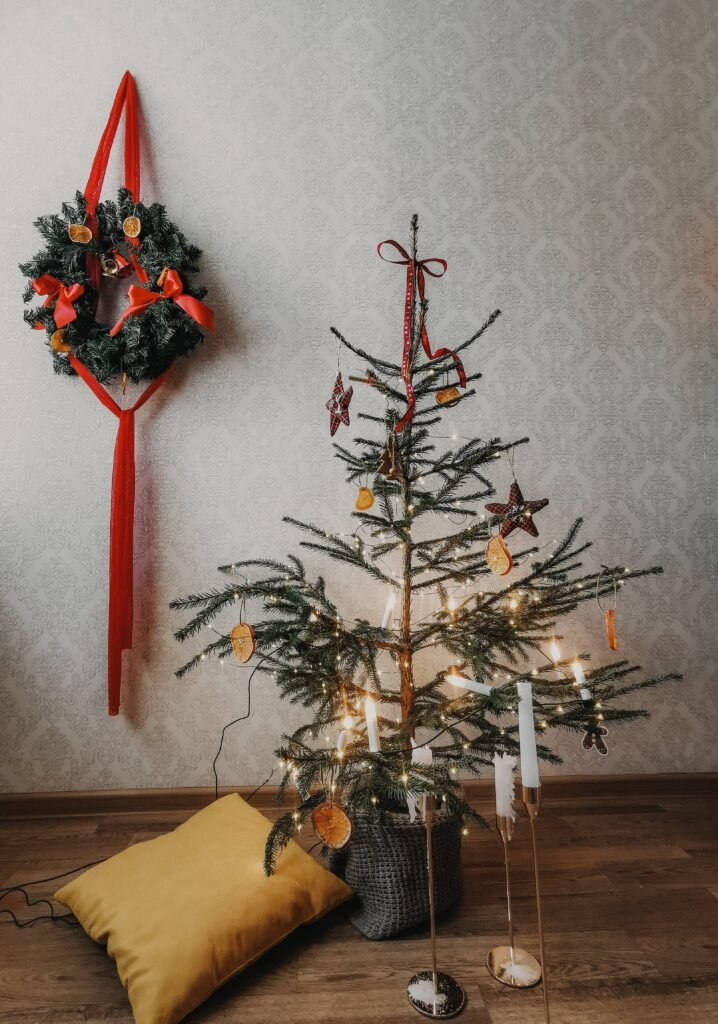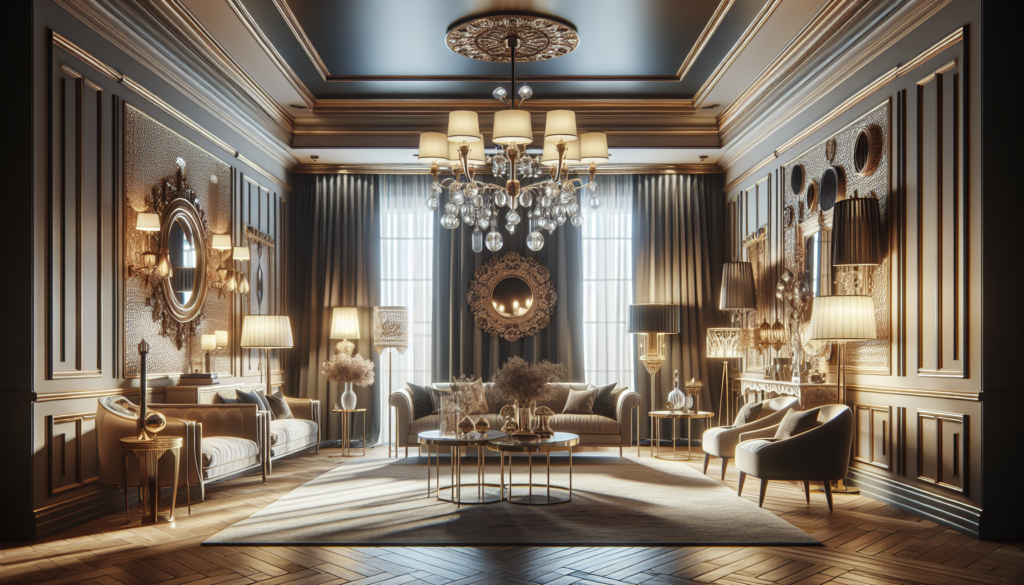Imagine transforming your space into a captivating sanctuary with the power of decorative lighting elements. By adding these unique and eye-catching fixtures, you can effortlessly create a statement that reflects your personal style and elevates your interior design. From elegant chandeliers that set the mood for sophisticated gatherings to whimsical pendant lights that add a touch of playfulness, the possibilities are endless. Let your creativity shine as you explore the transformative world of decorative lighting, and watch as your space comes alive with personality and charm.
Importance of Decorative Lighting Elements
When it comes to interior design, one of the most overlooked aspects is lighting. However, decorative lighting elements play a crucial role in creating a welcoming and visually appealing space. They not only provide illumination but also add a touch of personality to any room. Whether you want to create ambience, highlight key features, or add visual interest, decorative lighting elements are essential in making your space feel complete.
Creating Ambience
Decorative lighting elements have the power to transform the mood of a room by creating a specific ambience. By using different lighting fixtures, you can achieve a variety of atmospheres based on the occasion or desired vibe. For example, dimmed pendant lights can create a cozy and intimate atmosphere in the living room, while bright chandeliers can make a dining area feel more elegant and sophisticated. The right combination of decorative lights can set the perfect mood for any space, allowing you to create a welcoming and inviting environment.
Highlighting Key Features
Another important function of decorative lighting elements is to highlight key features in a room. Whether it’s an architectural detail, a piece of artwork, or a unique furniture item, using the right lighting can draw attention to these focal points. By strategically placing wall sconces or using adjustable spotlights, you can effectively showcase these features and make them stand out. This not only adds visual interest but also adds depth and dimension to the space.
Adding Visual Interest
Decorative lighting elements are an excellent way to add visual interest to any room. With numerous designs, shapes, and styles available, you can find lighting fixtures that complement your existing decor or make a bold statement on their own. The right decorative light can become a focal point itself, adding personality and charm to the space. From intricate chandeliers to modern pendant lights, these elements can become a conversation piece and enhance the overall aesthetics of your room.
Types of Decorative Lighting Elements
There are various types of decorative lighting elements to choose from, each offering its own unique style and functionality. Here are some popular options:
Chandeliers
Chandeliers are grand and elegant lighting fixtures that can instantly transform a room. They are often the centerpiece of a space and provide a luxurious and glamorous ambiance. Typically found in dining rooms, entryways, or living areas, chandeliers come in a variety of sizes, styles, and materials. Whether you prefer a traditional crystal chandelier or a modern geometric design, there is a chandelier that can suit your taste and elevate the look of your room.
Pendant Lights
Pendant lights are versatile and come in a wide range of styles and sizes. These hanging fixtures are perfect for adding a touch of style and illuminating specific areas, such as kitchen islands or dining tables. Pendant lights can serve as both functional and decorative pieces, providing task lighting while enhancing the overall design of the space. They can be grouped together for a dramatic impact or used individually to create a more minimalist look.
Wall Sconces
Wall sconces are wall-mounted fixtures that can serve as both decorative and practical lighting. They are ideal for adding accent lighting or creating a layered effect in a room. Wall sconces can be used to illuminate hallways, flank a mirror in a bathroom, or highlight artwork. With a wide range of designs available, from classic to contemporary, wall sconces can add a touch of elegance and charm to any space.
Table Lamps
Table lamps are popular decorative lighting elements that can be placed on various surfaces, such as side tables, nightstands, or desks. They not only provide task lighting but also serve as decorative accessories. Table lamps come in a variety of sizes, shapes, and materials, allowing you to find the perfect match for your decor style. Whether you prefer a sleek and modern design or a more traditional and ornate lamp base, table lamps can add warmth and ambiance to any room.
Floor Lamps
Floor lamps are versatile lighting fixtures that can provide both ambient and task lighting. They are ideal for filling empty corners or spaces in the room that require additional illumination. Floor lamps come in various styles, from sleek and minimalist designs to more unique and statement-making pieces. They can be used to create a cozy reading nook, highlight a specific area, or provide overall ambient lighting. With their height and size, floor lamps can add vertical interest and complement other decorative lighting elements in the room.

Choosing the Right Decorative Lights
When it comes to choosing the right decorative lights for your space, there are a few factors to consider. These include the style, functionality, and size and scale of the lighting fixtures. By taking these factors into account, you can ensure that the decorative lights not only enhance the aesthetics of the room but also serve their intended purpose.
Consider the Style
One of the key considerations when choosing decorative lighting elements is the overall style of your space. The lighting fixtures you select should complement the existing decor and contribute to the desired atmosphere. If your space follows a contemporary style, sleek and minimalistic lighting fixtures can be a great fit. On the other hand, traditional spaces can benefit from more ornate and decorative lighting pieces. By aligning the style of your lighting with the overall style of the room, you can create a cohesive and visually appealing space.
Consider the Functionality
In addition to style, it’s important to consider the functionality of the decorative lighting elements. Think about the purpose the lights will serve in each specific area. Are they meant to provide general illumination or focused task lighting? Understanding the functional requirements of each space will help you choose the right type of lighting fixtures. For instance, pendant lights with downward-facing shades are perfect for providing task lighting above a kitchen island, while a combination of table lamps and floor lamps can create a cozy and inviting atmosphere in a living room.
Consider the Size and Scale
The size and scale of the decorative lighting elements are crucial in achieving a visually balanced space. It’s important to consider the proportions of the room and the other furniture and accessories present. Oversized lighting fixtures in a small room can make the space feel cramped, while undersized fixtures can appear insignificant. Take measurements of the space and consider the height, width, and overall dimensions of the lighting fixtures you are considering. Make sure they are proportionate to the room and can make a statement without overpowering the other elements.
Placement and Arrangement of Decorative Lights
Once you have chosen the right decorative lights, the next step is to plan their placement and arrangement in the room. Here are some tips to help you create a visually pleasing and well-balanced lighting design.
Focal Points and Centerpieces
Start by identifying the focal points and centerpieces in the room. These could be architectural features like a fireplace, a statement wall, or a piece of artwork. Place lighting fixtures strategically to highlight these elements and draw attention to them. For example, a chandelier can be centered above a dining table, or wall sconces can flank a fireplace or a mirror. By focusing the light on these key features, you create visual interest and enhance the overall aesthetics of the space.
Layering and Depth
Create a layered lighting design by incorporating different types of decorative lights at varying heights. This adds depth and dimension to the room, making it visually more appealing. For example, combine pendant lights above a kitchen island with recessed lighting in the ceiling and a table lamp on a nearby countertop. This layered lighting approach not only provides adequate illumination but also creates a multi-dimensional effect, making the space feel more inviting.
Creating a Balancing Act
Achieving a balanced lighting design is essential to create a harmonious and cohesive space. Consider the distribution of light throughout the room and ensure that no area is left in the dark. Balance out the intensity and brightness of the lighting by using dimmers or adjustable fixtures. This allows you to customize the lighting levels based on the specific needs and mood of the space. By striking a careful balance between the different decorative lights, you can create a well-lit and visually balanced room.

Incorporating Decorative Lighting Elements in Different Spaces
The use of decorative lighting elements can enhance the atmosphere and functionality of various spaces in your home. Here are some tips on incorporating them in different rooms:
Living Room
In the living room, decorative lighting elements can provide both ambient and task lighting. A combination of table lamps, floor lamps, and pendant lights can create a warm and inviting space. Use floor lamps to brighten up dark corners and provide overall ambient lighting. Place table lamps on side tables or console tables to provide localized task lighting and add a decorative touch. If you have artwork or shelves in the living room, consider adding wall sconces or adjustable spotlights to highlight these pieces.
Dining Area
The dining area is an ideal space to make a statement with decorative lighting elements. A chandelier above the dining table not only provides focused task lighting but also serves as a centerpiece and adds a touch of elegance. Make sure the size and scale of the chandelier are proportionate to the table and the room. If you have a buffet or a bar area, consider adding wall sconces or pendant lights to provide additional illumination and create a cohesive look.
Kitchen
In the kitchen, functional lighting is key, but that doesn’t mean you have to compromise on style. Pendant lights above a kitchen island or peninsula can not only provide task lighting for food preparation but also serve as a visual focal point. Choose pendant lights that complement the style of your kitchen and add a pop of personality. Under-cabinet lighting can also be incorporated to provide additional task lighting and create a warm and inviting ambiance.
Bedroom
In the bedroom, decorative lighting elements can help create a cozy and relaxing atmosphere. Bedside table lamps are essential for providing task lighting for reading or other activities. Consider lamps with dimmers for added versatility. A statement chandelier or a stylish pendant light can serve as a focal point and add a touch of luxury to the room. If you have a dressing area or vanity, consider adding wall sconces or a lighted mirror for both functional and decorative purposes.
Bathroom
The bathroom is another space where both functionality and style should be considered when choosing decorative lighting elements. Vanity lighting is essential for tasks such as applying makeup or shaving. Install sconces on either side of the mirror or opt for a lighted mirror for a streamlined look. If your bathroom has a bathtub or a focal point like a freestanding vanity, consider adding a chandelier or a pendant light to create a spa-like ambiance and add visual interest.
DIY Decorative Lighting Projects
If you’re feeling creative and want to add a personal touch to your decor, you can try some DIY decorative lighting projects. Here are a few ideas to get you started:
Customizing Existing Light Fixtures
Give your existing light fixtures a makeover by customizing them with paint or unique finishes. Spray paint can transform a simple pendant light or chandelier into a bold and stylish piece. Experiment with different colors or metallic finishes to match your decor style. You can also add decorative elements such as beads, ribbons, or crystals to create a more personalized look.
Creating Mason Jar Lanterns
Mason jar lanterns are a popular DIY lighting project that adds a rustic and charming touch to any space. Simply insert a candle or a string of fairy lights into a mason jar and hang them from a tree branch, ceiling, or porch. These DIY lanterns can be used both indoors and outdoors to create a cozy and intimate atmosphere.
Designing Lighted Wall Art
Create your own unique lighted wall art by combining string lights and canvas or wood panels. You can create a stunning constellation effect by poking small holes into the panel and weaving the string lights through them. Alternatively, paint or draw a design on the panel and then add the string lights on top to outline the image. Hang your lighted wall art in the living room or bedroom to add an artistic and whimsical touch.

Maintenance and Care for Decorative Lighting Elements
To ensure that your decorative lighting elements continue to shine and look their best, regular maintenance and care are necessary. Here are a few tips to keep in mind:
Regular Cleaning
Dust and dirt can accumulate on lighting fixtures, affecting their brightness and overall appearance. Clean your decorative lights regularly to maintain their shine. Use a soft cloth or duster to gently wipe the surfaces of the fixtures and remove any dirt or debris. Avoid using abrasive cleaning solutions or rough materials that may scratch or damage the finish. For crystal chandeliers, you may need to use a specialized cleaner or enlist the help of a professional.
Replacing Bulbs and Parts
Over time, bulbs may burn out or need to be replaced to maintain proper illumination. Keep spare bulbs on hand and replace them as soon as they burn out. If any parts of the lighting fixtures become damaged or broken, replace them promptly to maintain the integrity and functionality of the fixtures. Consult the manufacturer’s instructions or seek professional assistance if you are unsure about how to replace bulbs or parts safely.
Checking Wiring and Safety
Regularly inspect the wiring and safety of your decorative lighting elements to ensure they are in good working condition. Look for any signs of frayed or damaged wires, loose connections, or other electrical issues. If you notice any problems, contact a certified electrician to assess and repair the wiring. Additionally, ensure that all lighting fixtures are securely fastened and properly installed to prevent accidents or damage.
Accessorizing Decorative Lighting Elements
To further enhance the aesthetics and functionality of your decorative lighting elements, consider incorporating accessories. Here are a few ideas:
Using Lamp Shades and Covers
Lamp shades and covers can add a decorative touch and soften the light emitted by the fixtures. Choose shades or covers that complement the style of your lighting elements and blend well with the overall decor. They can also help direct and diffuse the light, creating a more pleasing and comfortable ambiance.
Adding Dimmers and Smart Lighting Controls
Installing dimmer switches or using smart lighting controls allows you to customize the intensity and mood of your decorative lights. Dimmers enable you to adjust the brightness of the fixtures, creating a variety of atmospheres based on your preferences. Smart lighting controls, such as voice-activated systems or smartphone apps, offer convenience and flexibility in controlling and programming your lights.
Decorative Light Bulbs and Filaments
Choose decorative light bulbs or filaments to add an extra touch of style to your lighting fixtures. Vintage-style Edison bulbs or filament bulbs can evoke a nostalgic and retro feel. Globe bulbs or colored bulbs can add a playful and whimsical touch. Select bulbs that complement the design and aesthetics of your decorative lighting elements and make a statement on their own.

Trends in Decorative Lighting
Decorative lighting trends are constantly evolving, reflecting changes in design preferences and technology. Here are some notable trends:
Industrial and Retro Styles
Industrial and retro styles have been popular in recent years, with exposed bulbs, metallic finishes, and rustic designs taking center stage. Industrial-inspired pendant lights with aged or distressed finishes can add a vintage and edgy vibe to any space. Retro-inspired fixtures, such as mid-century modern chandeliers or table lamps, can bring a nostalgic touch and timeless appeal to your decor.
Mid-Century Modern Influence
Mid-century modern design has experienced a resurgence in popularity, and its influence can be seen in decorative lighting elements. Sputnik chandeliers, with their futuristic and atomic-inspired design, are a hallmark of the mid-century modern style. Sleek and simple floor lamps or pendant lights with clean lines and smooth curves can also evoke this iconic design era.
Energy-Efficient Lighting Solutions
As sustainability and energy efficiency become increasingly important, decorative lighting elements are incorporating more energy-efficient technologies. LED lighting is a popular choice due to its long lifespan, low energy consumption, and versatility. LED strips or panels can be used for unique and creative lighting effects, while energy-efficient bulbs in decorative fixtures help reduce electricity usage and environmental impact.
Conclusion
Decorative lighting elements are essential in creating a well-designed and inviting space. They not only provide illumination but also add personality and style to any room. By choosing the right decorative lights, considering placement and arrangement, and incorporating them in different spaces, you can elevate the aesthetics and functionality of your home. Whether you opt for grand chandeliers, sleek pendant lights, or stylish table lamps, decorative lighting elements have the power to transform your space and make a statement. So, let your creativity shine and light up your home with these beautiful additions.



